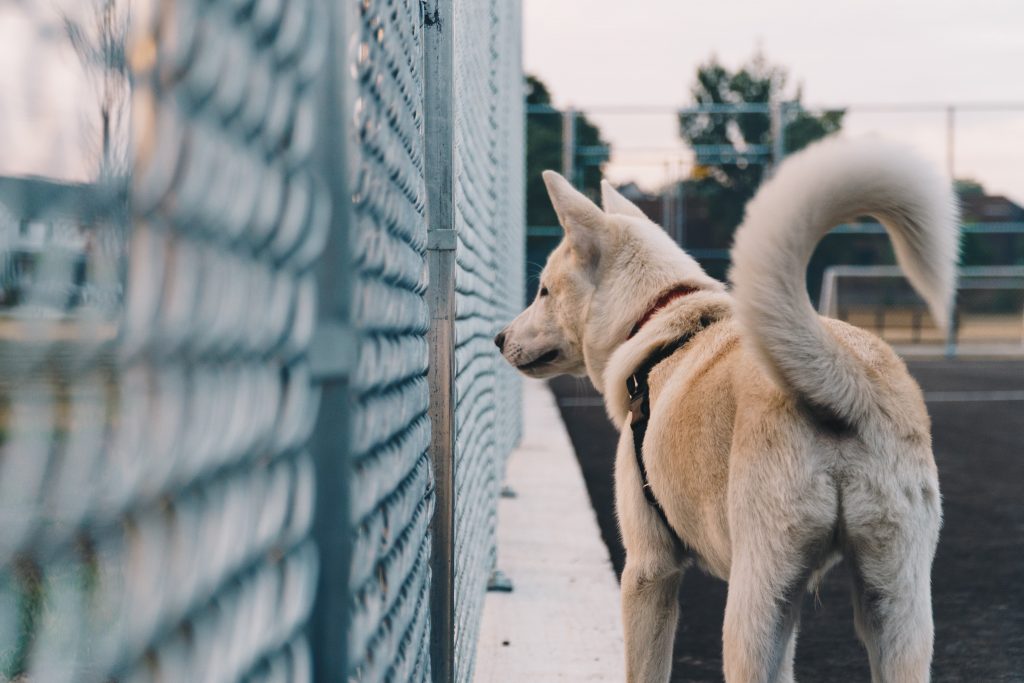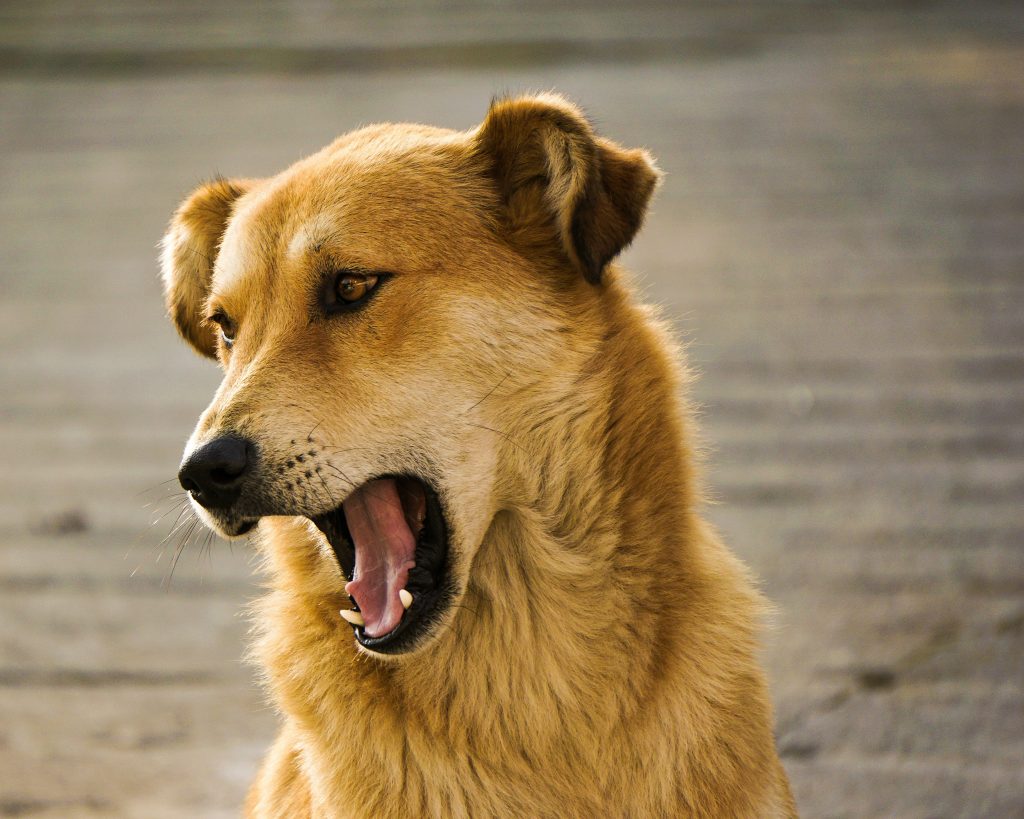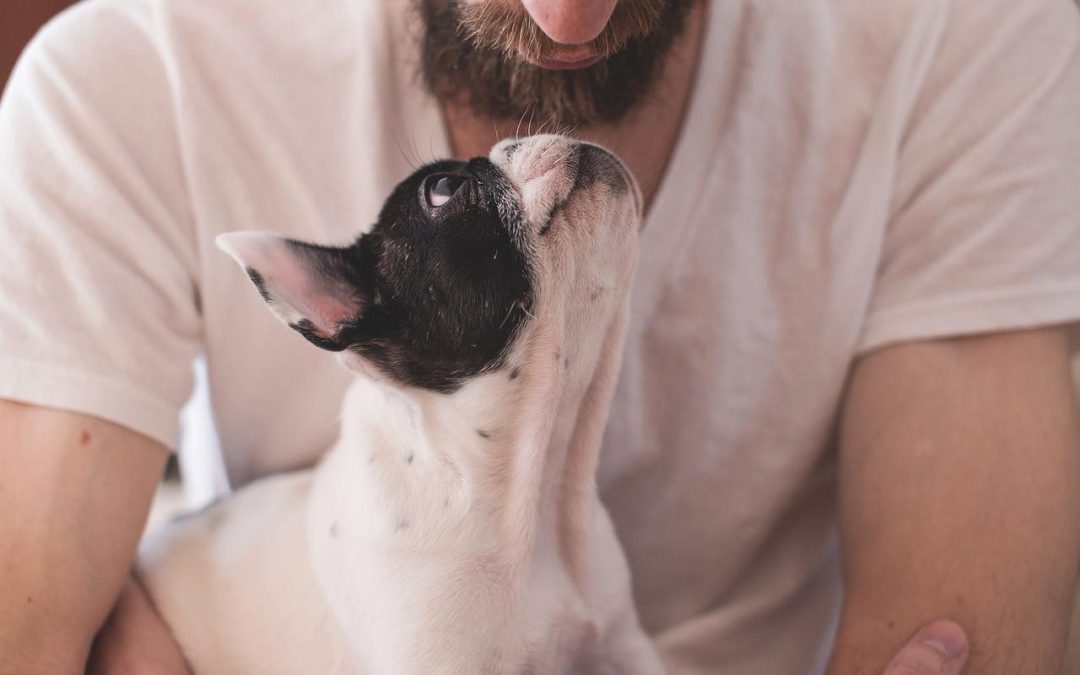Unless you’re a second Dr Doolittle, you are probably not able to have a conversation with your dog. You probably talk to your dog, but they don’t talk back. That being said, dogs do try to talk to us through their own special method – body language. They can communicate what they want or need, their happiness, fear, interest and sometimes very effectually, their aggression, all through body language. If we want to understand and bond with our dogs, it is so important for us to be able to recognise what their signals mean.
Below are some of the signals your dog may be displaying to talk to you.
Aggression
An aggressive dog will have his teeth exposed, his tongue won’t be visible and he’ll be growling and barking aggressively. If preparing to attack, the dog’s body will be stiff and he’ll be standing with legs splayed and head low.
Fear
Signs of fear:
- Ears held back tightly against the head
- Bulging eyes
- Rolling onto their back to be submissive
- Urination and/or defecation
- Whimpering
- Salivating
- Incessant panting
- Bolting
- Hiding
- Growling
Happiness/Playfulness
A dog in a playful mood will crouch in a ‘play bow’ and wag his tail. Whenever a dog’s elbows are bent in some way, the dog is in a happy posture.
Interest
A dog with its head tilted is curious. It your dog pricks his ears forward and stares, his interest has been peaked.
Licking
Your dog could be telling you a lot of things by licking you.

- Licking accompanied by ‘whale eyes’ (the whites of your dog’s eyes show, and he looks worried) means that your dog is uncomfortable with what you’re doing and is using appeasement methods (licking submissively) to get you to stop. If at any point a dog feels threatened to the point of biting, it will stop licking and pull back it’s tongue ready to bite. No dog in their right mind would bite with their tongue sticking out! Ouch!
- If your dog licks your hand shortly after sniffing it, it is a form of greeting. Think of it this way: We stroke dogs to show we like them; they lick us to show they like us.
- Licking might be something your dog does to get pats and attention.
- Licking is also a comforting behaviour for dogs. Pretend to cry and be upset, and you’ll probably have your dog by your side in no time, trying to do saliva therapy.
All this being said, your dog may simply lick you because you taste good! When we sweat we release salt and acidic chemicals that may taste delicious to our dogs.
Sometimes dogs can develop obsessive licking of themselves or something else, in which case training for behaviour adjustment is the best solution.
Paws
Even what your dog does with his feat can speak volumes.
- If your dog wants to get your attention, he might stamp his feet alternating from left to right, and stare steadily at you.
- A dog will sometimes jump up on a person and ‘hug’ them with their front legs to show their dominance.
- Standing on your feet is also a subtle signal from your dog that he thinks he is in charge (unless of course it’s a trick you’ve taught him).
Showing Teeth
When a dog bares his teeth and growls, most people would realise that things look bad. Sometimes however, dogs will bare their teeth in a kind of grin referred to as the submissive grin and there’s nothing aggressive about it. You’ll see this the most when dogs communicate with each other while playing or fighting. It is often accompanied by a crouching posture and interrupted by fast licking.

Tails
Dog’s tails are an endless source of information to us, but can be rather complicated to read all the same. Here are the basics:
- For a dog such as a lab, collie or pit-bull, a high wag indicates dominance and a low wag, submission. For breeds with tails that arch over their backs like terriers, a dominance wag will be more stiff than their normal tail position.
- A tail tucked between the legs is a sign of fear.
- A tail that is held straight out parallel to the ground is a sign of concentration and sometimes dominance.
- If the tail is held high and wags slowly while the body is tense, the dog is focussing on something – another dog, their person, or perhaps something they are about to chase.

Yawning
If a dog yawns and makes a slight sound as they do so, they want something – you’ll have to decide what from the context. A yawn and a turning of the head to the side is telling you that everything is okay. A yawn just after sleep is – just a yawn!
Watch your dog carefully to see what he’s telling you. If you discover that something your dog is doing is not cute but dominant (like hugging, standing on your feet or wagging high), get a trainer to help you resolve the problem before your dog gets more dominant and issues develop.
When your dog is introduced to new things, look out for signs of fear and help them have positive associations to what might otherwise scare them.
I hope these brief tips help you understand your dog, and perhaps help you speak dog better!

